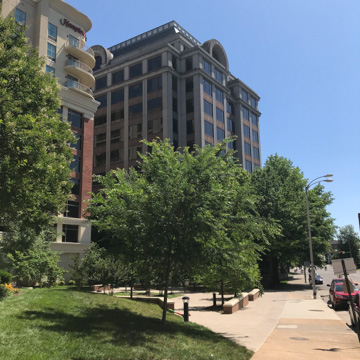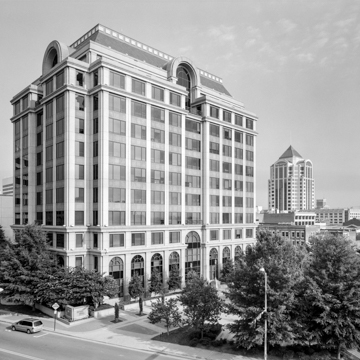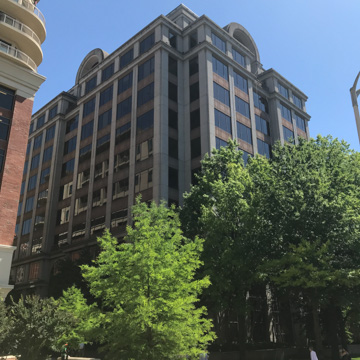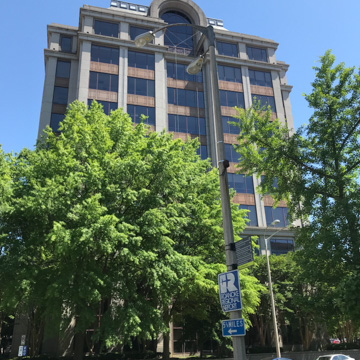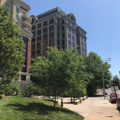Following a trend toward housing prosperous companies in high-rise buildings with glass walls, the railroad company left its offices on Railroad Hill for this spacious, landscaped downtown lot. The building's materials of gray granite, precast concrete, and smoky-blue glass are enlivened by maroon mullions and brown spandrels. From its arcaded base to its cornice, the building makes clear references to classical elements, though here simplified and stylized. The building's massing is symmetrical, but breaks from the usual rectangle with a recessed central bay and corners. A glazed round-headed arch crowns each of the central bays, and the mansard roof makes a sober reference to one of the favorite elements of barely bygone Postmodern architecture.
You are here
Norfolk Southern Building
If SAH Archipedia has been useful to you, please consider supporting it.
SAH Archipedia tells the story of the United States through its buildings, landscapes, and cities. This freely available resource empowers the public with authoritative knowledge that deepens their understanding and appreciation of the built environment. But the Society of Architectural Historians, which created SAH Archipedia with University of Virginia Press, needs your support to maintain the high-caliber research, writing, photography, cartography, editing, design, and programming that make SAH Archipedia a trusted online resource available to all who value the history of place, heritage tourism, and learning.















